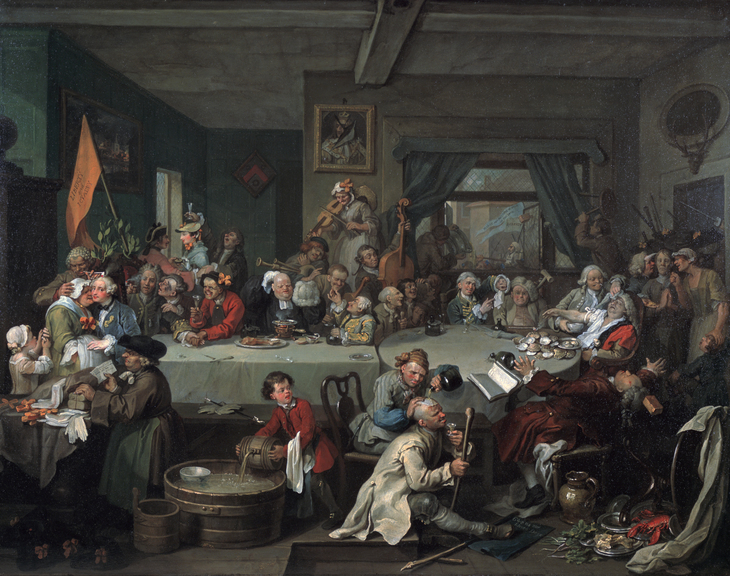Review: This William Hogarth Exhibition Is The Most Debauched (And Probably Best) Exhibition You'll See In 2019
Looks like this article is a bit old. Be aware that information may have changed since it was published.
Last Updated 09 October 2019

It seems an odd thing to say, but everything that William Hogarth despised is what we love him for most.
In the noisome London of the 18th century artist, criminals swing at Tyburn, horses are flayed on the street, and bairns plummet to uber-early deaths as their gin-soaked mothers reach for more snuff. It's about as far as you can get from the chintzy aristocrats posing beneath trees, that Thomas Gainsborough et al were cranking out around the same time. Hogarth's world, inevitably, is a thousand times more seductive.

Anyone who's visited John Soane's Holborn townhouse knows that the architect eschewed feng shui in favour of hoarding a hulking great trove of fine art. This included two sets of Hogarth paintings — A Rake's Progress and The Humours of an Election — both painfully erudite commentaries on sin, corruption and too much of a good thing.
In Place and Progress, they're joined by other Hogarth paintings and etchings from collections dotted about the country — essentially compiling a Best Of Hogarth, one rollicking hit after the next. Lane. Progress. A-la-Mode. Progress (the other one). But the Rolling Stones have nothing on the level of debauchery kicking here.

The unusually intimate setting of the museum (for such a major retrospective) makes the works almost giddy-making — pulling us through the canvas into the grubby misadventures of Tom Rakewell and Moll Hackabout, as the city chews them up and spits them out. It's something we can all relate to, although hopefully not to the point where we're perishing in a mental asylum, while cruel fan-waving poshos watch on and cackle.

Hogarth was the master of the action-packed mise-en-scene: in any one piece, dozens of narratives unravel in chaotic and noisome clamour. There's no dead wood in the characters though; cartoonish they might appear on the surface, but each feels rounded in their own right and is very probably based on someone Hogarth knew, or had seen. The main players — such as Tom in The Four Stages of Cruelty — visibly crease with age, evilness, and eventually, eternal despair. They are created as health and safety warnings for the great unwashed — 'Danger of Death' cartoons for their own age.

The exhibition's curation is sparing, only really covering the bare bones of each tale. But half the fun of Hogarth is sticking your nose right in — finding the dog chewing on a pig's ear, the recalcitrant child eyeing up a hot poker. Because of the small-scale setup — dotted throughout the house, even down in the kitchen — you can do that. (Look out for the teetering London Bridge, in the last frame of Marriage a la Mode.) This is also a chance to marvel at the deft artistry of one of the greatest artists who ever drew breath.

While the 'Progress' in these stories plummets downwards as much as it rises upwards, the 'Place' is one omnipotent character looming over all others: London. From the Rose Tavern in Drury Lane — a syphilis-riddled den of vice — to the foreboding gallows at Rotherhithe, to the despairing depths of Bedlam, Hogarth uses the capital's geography to frame his moralistic vignettes. Unfalteringly comical, Hogarth's works are also embellishments of a place he often viewed as hell on Earth. Through a 21st century set of eyes — and distanced from the horrors of the 18th century metropolis — we delight in the rambunctiousness of it all, and fantasise in a grubby old city that's fast becoming squeaky clean.
Hogarth: Place and Progress, Sir John Soane’s Museum, 9 October 2019 -5 January 2020. Entry is free. Special paid-for events also run throughout the exhibition.




